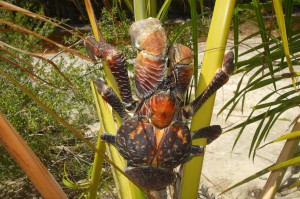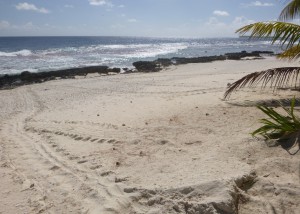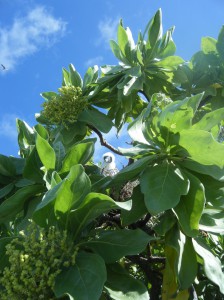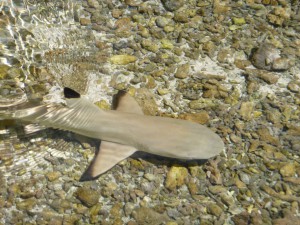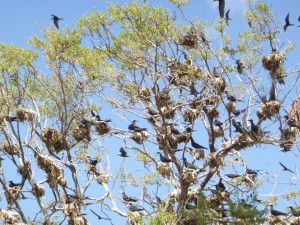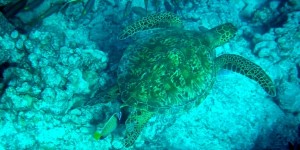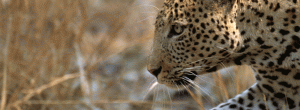Here we take a look at the multitude of organisms that contribute to the variety of life on Earth. Species are a convenient way of describing types of life, as they are capable of successful reproduction. We look at some ways of describing species, and also the threats that affect them. We also consider the things that we aren’t sure about ~ data deficiency. Our pressing need is to reduce the loss of species worldwide.
We are concerned with the entire range of living species that form our planet’s global biodiversity. We can define species in a number of ways, including taxonomic groups (such as Orders or Genera), or by their primary habitat (e.g. marine, riverine or terrestrial). We can describe their size, for instance megafauna or microfauna; we can mention if they are mostly solitary or colonial; or what particular adaptations they have evolved. This last factor might indicate the niche these animals occupy, or if they are migratory or endemic somewhere.
How many species are on Earth?
One problem that biologists face is that we don’t actually know how many species of life there are on Planet Earth. Some legislators say we can only protect what we can describe, in other words we have to identify and name a species before we can include it in some law. We’ve named around two million species, but how many are there really? Five million or thirty million? We don’t know. Given that many activities on earth require funding, and there are always other priorities before anyone even considers biodiversity, it’s not surprising we have this knowledge deficit. There are other issues too: we don’t have so many taxonomists (those rare folk capable of identifying some obscure species); there is the long process of Naming a species, and the importance of registering the Type Specimen. But what about trying to find a very rare or secretive animal; or a rare plant? How much local knowledge is there scattered around the world’s tribal peoples: Ethnozoology or Ethnobotany? Some of us do spend our lives searching for this wisdom, but we are also rare. Yet another endangered species.
Far away from people
Then think of economic concerns: so many people locked into the desperate quest for cash that they then don’t study the sciences: they chose business studies instead. Science is too hard and pays little. The IUCN Red List is our best tool for identifying species at risk. It uses Categories and Criteria that allow us to consider different species in a similar way, so we have a common method of deciding if something is Endangered, Critically Endangered, or maybe even Extinct. There is a process to elevate the risk, or reduce it if a species is recovering well. But there are very many species that are Data Deficient: we just don’t know what their current population status is. The very remote places in our world, such as atolls, mountains, dense jungle, deserts, or isolated valleys are hard to get to. Transportation is often very rare or non-existent: it is this isolation that may have given some species a haven in which to survive. Many decades can pass between scientific surveys, so we really have no idea of the current status for some places; but we quote data from four or five decades ago, if not even longer. Little better than guessing. Another problem is human population increase. At the start of the 20th Century global population was less than two billion; now in 2014 it is almost 7.5 billion people and still growing rapidly. Human activities are the major cause for loss of species and their habitats.
Our challenges
So we have several interlocking problems: we don’t know how many species there are; we don’t have enough people trained to go and find them; we don’t have enough taxonomists to identify which species we do find; we might not be able to determine if a species is threatened, especially for migratory animals; we are unable to do much about habitat loss or degradation in the face of global business operations; we face a constant struggle finding money for conservation and research and so on. Climate change is just one more issue to add to our list. Despite promises of politicians we mostly find that little changes for the good of our world.
Perpetual optimism
But here’s the good bit. Many biologists and conservationists are optimists, and we need to be. We push a different agenda. One example is the ‘precautionary principle’. Just because we don’t have any data to prove a species is at risk, we can assume that it is ~ until we have evidence saying we were wrong. We don’t mind. It’s better than saying everything is fine and then finding out we were hopelessly wrong in our suppositions. Another major boon for us is the internet: the ease of finding information; but we have to be discerning as there is a lot of rubbish in cyberspace. We can study online and undertake tertiary level programmes from anywhere in the world; we now see ‘citizen science’ (ordinary folk reporting data and uploading images for species confirmation). Another great leap is the advent of electronic petitions (e.g. AVAAZ): anyone online can click a button and add their support to some cause or other. Likewise with ‘crowd-funding’ (come up with an idea and ask the public to donate to your project). Easy. So we now have some tools to help us, even when those who ought to be doing such work (e.g. governments and their departments) simply do not. In many cases they have also become part of the problem. Their policies and economic needs drive many of the processes causing the loss of global biodiversity.
The Biodiversity Alliance
So why should The Biodiversity Alliance be any different from all the other organisations that were established to make our world sustainable? Only our intent to maintain Earth’s rich biodiversity in as good a state as possible. We would like there still to be wild animals in the future. To achieve that goal the animals need safe habitats. Those habitats have to be interconnected in order for animals to move from one place to another; often essential because many species use more than one habitat to fulfil their life cycle. Really it is down to us: we change our human behaviour so that we only utilise beneficial activities, or else we stand idly by, business-as-usual, and watch our world slowly die.


